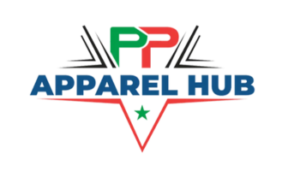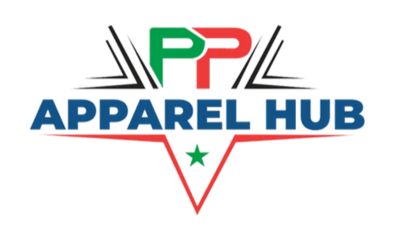Shirt printing has evolved over the years, offering an array of techniques that cater to various needs. If you are designing custom shirts for a special event, a business, or a personal project, you must know the best printing method for your design to make a significant difference. With so many options available today, it can be challenging to figure out which method is best for your needs.
Curious about what are the common types of shirt printing? Read on!
The Most Popular T-Shirt Printing Types
Direct-to-Garment Printing (DTG)
DTG printing is a modern method that uses inkjet technology to print designs directly onto the fabric. This method allows for vibrant, high-quality prints, especially for intricate designs and colorful images. The process is quick and doesn’t require as much setup as traditional methods like screen printing, which makes it an ideal choice for small runs or custom orders.
With DTG printing, the design is printed directly onto the fabric, allowing for a high level of detail and color precision. The process works best on cotton and cotton-blend shirts, which absorb the ink more effectively. However, it is not as ideal for polyester or other synthetic fabrics.
Pros:
- Perfect for complex designs with many colors.
- Ideal for small batch orders.
- No setup costs.
- Soft to the touch; the ink integrates into the fabric.
Cons:
- Best suited for cotton-based fabrics.
- Not as durable over time as other methods.
- Limited print area compared to other techniques.
Screen Printing
Screen printing (also known as silkscreen printing) is one of the oldest and most popular methods of t-shirt printing. It involves creating a stencil (or screen) of the design and using that to apply ink onto the garment. This method works well for large orders, as it allows for mass production at a relatively low cost per shirt.
One of the major benefits of screen printing is its durability. The ink used in this method is thicker than that used in other techniques, which means that the prints last longer and are more vibrant. However, it’s not the best method for intricate designs, as the setup process can be more time-consuming and costly for small batches.
Pros:
- Durable prints that can withstand many washes.
- Ideal for large batch orders.
- Can print on various fabrics, including cotton, polyester, and blends.
Cons:
- Not ideal for designs with many colors.
- High setup costs, especially for small runs.
- Limited print area compared to other techniques.
Heat Transfer Printing Methods
Heat transfer printing is a versatile and affordable method of printing designs onto garments. It involves using a heat press to transfer the design from a special transfer paper to the fabric. There are several variations of heat transfer printing, each with its unique characteristics and benefits. This method allows for full-color prints, detailed designs, and even all-over prints, making it a popular choice for custom shirts.
Dye Sublimation or All-Over Printing (AOP)
Dye sublimation (also known as all-over printing, or AOP) uses heat to transfer dye into the fibers of the fabric, resulting in vibrant, durable prints. This method is ideal for printing on polyester fabrics, as the dye bonds with the fibers and produces rich, long-lasting results. Unlike surface printing methods, dye sublimation allows for full coverage, meaning that the design can extend from seam to seam.
However, this method is not suitable for cotton fabrics, as they don’t absorb the dye as effectively. Additionally, dye sublimation works best on light-colored fabrics, as dark shirts won’t provide the same vibrancy.
Pros:
- Long-lasting, vibrant prints.
- Ideal for all-over designs and custom patterns.
- Perfect for polyester fabrics.
Cons:
- Not suitable for cotton or dark fabrics.
- Limited to lighter-colored shirts.
- More expensive than other printing methods.
Direct-to-Film Printing (DTF)
DTF printing is a relatively new method that involves transferring designs from a special film to the garment using heat and adhesive powder. This technique offers high-quality prints with vivid colors and is suitable for a wide range of fabrics, including cotton, polyester, and blends.
Unlike DTG printing, DTF printing doesn’t require pre-treatment for the fabric, making it a faster and more cost-effective method for certain applications. The result is a bright, glossy finish, but the print may feel a bit plasticky compared to other methods.
Pros:
- Works on various fabrics, including cotton and polyester.
- Vibrant and durable prints.
- No pre-treatment required.
Cons:
- The print may feel plasticky.
- Not ideal for large orders.
- Requires a specialized printer and setup.
Plastisol Transfers
Plastisol transfers are a form of indirect screen printing. Instead of printing directly onto the garment, the design is first applied to a transfer paper using plastisol ink, then transferred to the fabric using heat. This method offers vibrant, long-lasting prints and is ideal for small batches or when you need to customize individual shirts.
Plastisol transfers are known for their durability and ability to produce designs with detailed effects. They are commonly used for creating custom shirts for events, sports teams, or promotional purposes.
Pros:
- Durable, long-lasting prints.
- Suitable for small orders.
- Can create unique finishes like glossy or textured effects.
Cons:
- Not ideal for printing photos or highly intricate designs.
- Requires heat press equipment for application.
- Limited color options compared to direct printing methods.
CAD Heat Transfer Vinyl Printing
CAD heat transfer vinyl printing (also known as CAD vinyl printing) is commonly used for printing text-based designs on shirts, especially for sports teams, businesses, or events. In this process, a CAD machine cuts out the design from a sheet of heat transfer vinyl, which is then applied to the fabric using a heat press.
This method is ideal for printing simple logos, names, or numbers, and is commonly used on jerseys, uniforms, and corporate apparel.
Pros:
- Excellent for simple, text-based designs.
- Can be used on any type of fabric.
- Quick turnaround for small orders.
Cons:
- Not suitable for complex or photographic designs.
- Can create a stiff, thick texture on the shirt.
- Limited to text and simple shapes.
Other Printing Techniques
In addition to the common printing methods we’ve covered, there are several other techniques that can be used for specialized applications. These methods offer different results, from intricate detailing to eco-friendly designs.
Embroidery
Embroidery involves stitching a design directly onto the fabric using threads. This method is ideal for logos, monograms, or text, and is commonly used for corporate apparel, hats, and polos. Embroidery adds a sophisticated, professional touch to garments and is incredibly durable.
Pros:
- Long-lasting and high-quality results.
- Perfect for logos and text.
- Professional, upscale appearance.
Cons:
- Limited to simple designs.
- Can be expensive for large orders.
- Requires special equipment and expertise.
Which T-Shirt Printing Methods Should You Choose?
When deciding which shirt printing method to use, it’s important to consider the design, fabric, quantity, and budget. Here’s a quick breakdown to help guide your decision:
- For detailed, multi-colored designs, DTG printing is a great choice.
- For large orders and simple designs, screen printing is a cost-effective option.
- For all-over prints on polyester fabrics, consider dye sublimation.
- For small runs with vibrant colors on a variety of fabrics, DTF printing is a good option.
- For durable and unique finishes, plastisol transfers and heat transfer vinyl are ideal.
FAQs
What is a method of printing on cloth called?
The process of printing on cloth is referred to as “fabric printing.” Various techniques, such as DTG printing, screen printing, and DTF printing, can be used for fabric printing.
What is printing on clothes?
Printing on clothes refers to the process of applying designs, logos, or images to fabric using various techniques like DTG, screen printing, and heat transfer methods.
What do you call a printer that prints on clothes?
A printer that prints directly onto fabric is known as a “direct-to-garment” (DTG) printer. These printers use specialized inkjet technology to print designs directly onto the fabric.
What is the printing process called?
The printing process can vary depending on the method used. Common terms for fabric printing include screen printing, DTG printing, heat transfer printing, and dye sublimation. Each method utilizes different technologies to transfer ink or dye onto fabric.



